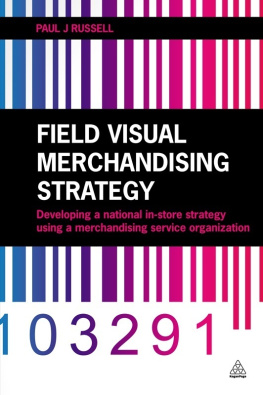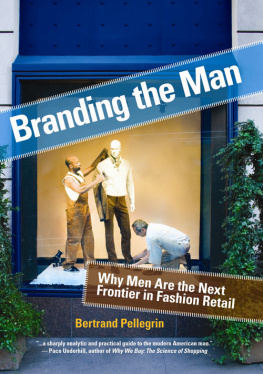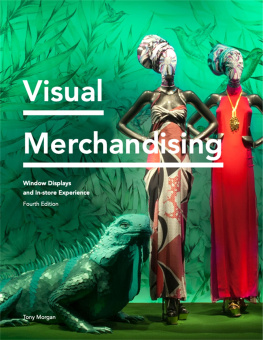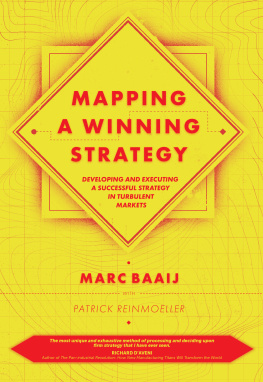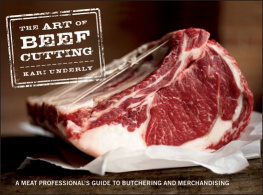F or more than two decades, Paul Russell has been involved in the development and execution of field visual merchandising strategies. Paul grew up in Germany, where at an early age he became captivated with art and fashion. After returning to the United States, he decided to study fashion merchandising in college and started his career in visual merchandising for a national mens clothing retailer.
After being encouraged to provide his expertise to smaller retailers, Paul started a visual merchandising consulting business. He began by visiting retail stores, making visual assessments and presenting retailers with proposals on how to increase their sales through the visual merchandising techniques and unique training he offered.
His success in the consulting realm led to an opportunity to work for a world-renowned athletic brand. He trained, developed and managed a large team of field visual merchandisers while gaining a wealth of knowledge in this field.
Paul immersed himself in all the materials he could find on training, project management, visual merchandising and strategic planning. His efforts paid off and through the years Paul has worked for leading apparel brands and developed field visual merchandising strategies on a national and international level.
Paul currently serves on the Manufacturers Advisory Council for the World Alliance for Retail Excellence and Standards and was also the Chairman of the 2014 Retail Merchandising and Marketing Conference.
I magine stepping onto the battlefield wearing a blindfold. You aimlessly bounce from place to place, attempting to dodge unforeseen bullets. It is impossible to plan an attack or defence. Before going to war with the enemy, it is imperative that you learn the art of strategy. In the same way, before you start developing your field visual merchandising (FVM) strategy, you must gain an understanding of the skills necessary to win the battle against your adversaries and the pertinent information required for your success.
Before we move forward, lets gain an understanding of visual merchandising and the difference between visual merchandisers and field visual merchandisers. Visual merchandising is the act of creatively presenting products in a manner that will attract consumers and stimulate sales. When an item is on display in a clothing department, in a window or on a mannequin, the creative process of developing the display and coordinating the clothing falls under the umbrella of visual merchandising. Unsurprisingly, this task is usually performed by visual merchandisers. Steve Kaufman, the Editor at Large for VMSD magazine, states that:
Visual merchandisers create the in-store environment that supports the retailers marketing and merchandising strategies. They set the mood; highlight the merchandise; and invite, attract, welcome, and inform shoppers. They also, somewhat more subtly, make the store a wonderful, joyous place to be.
Visual merchandisers are salespeople who possess the knowledge and understanding to creatively present a companys merchandise using specific techniques and principles. Their goal is to ensure the product is presented according to standards, placed on the correct fixturing, and displayed with accurate signage. In short, they help to build the brand.
Many visual merchandisers have the responsibility of ensuring a product is creatively presented in one or more retail stores. However, these visual merchandisers may also have the title field visual merchandiser and may work for a specific retail chain or manufacturer. The role of a field visual merchandiser is to travel to a group of stores regularly and balance responsibilities such as implementing directives, maintaining the companys high standards of product presentation, training salespeople and developing strong relations with store managers and personnel.
Each clothing manufacturer has a corporate office and a group of sales executives tasked with selling their products to retailers. When purchased, this merchandise is forwarded to the companys chain of retail stores.
To ensure merchandise is presented and displayed in compliance with the companys merchandising standards, the manufacturer may have a team of visual merchandisers who travel to retail stores to assist with presenting the manufacturers line of product. Manufacturers often provide these merchandising services to many retailers and may hire an outside agency or organization to employ a field team that can accommodate their vast need for coverage throughout many regions. This is usually a merchandising service organization (MSO) that hires a large team of field visual merchandisers. Although the responsibilities may be the same as those of a field visual merchandiser, these jobs are often placed under slightly different titles, such as a merchandising specialist or brand ambassador.
In addition to manufacturers, many retailers also see the value in hiring an MSO to execute their merchandising or visual merchandising strategies. They may employ an approved MSO to service all their stores on a national level. The MSO team may be hired to maintain the product presentation and complete window and interior displays.
A manufacturer or retailer will usually hire a designated person with the responsibilities of developing and executing a strategy at retail with a team of field visual merchandisers. In this book, we will refer to this designated person as the leader, but there are a variety of titles for such a position: director of field visual merchandising, FVM manager, director of visual merchandising, retail marketing manager or director. The leader is the mastermind behind the operation and is usually responsible for creating and overseeing the development and execution of the strategy.
This leader should have both creative and analytical skills. It takes innovative thinking and an artistic eye to present a product in a manner that attracts consumers. Analytical skills are essential in developing and executing a strategy over a large geographical area. So, as the leader, one must be meticulous with details and systematic in ones approach to solving visual merchandising problems. There is a plethora of additional skills that are generally acquired while in the field of visual merchandising that aid in the development of winning strategies.
Leaders that excel in the apparel FVM industry usually possess very similar proficiencies and experiences. As the leader, one should constantly develop expertise in every area associated with the development and execution of FVM strategies. In addition to managing and being a mentor to the team, it is imperative that one masters the eight specific skills below. Lets discuss these key abilities and experiences:
- understanding the brands DNA;
- uncovering the visual merchandising culture in the organization;
- staying up-to-date on industry knowledge;
- understanding standard and custom fixturing;
- directives, planograms and look books;
- developing training programmes and curriculums;
- window displays and interior presentations;
- sourcing vendors.
Understanding your brands DNA
You should have a clear understanding of your brands DNA, regardless of whether you work for a clothing manufacturer or a retailer. This DNA consists of everything from how your company started the product or service it offers, to knowing all aspects of your companys target consumer. Corporate DNA deals with the personalities of the company: the way a company does business, its motivation, the drive behind the force of behaviour. It is important to understand where your company sees itself within the retail industry. What is your brands weakness? What methods or concentrations do the senior executives seek to improve? Is your brand seeking to grow or are you content with the current position you hold in the market? Your company may compete in a particular market and may sell product in numerous trade channels or it may be a speciality retailer, department store or a big box retailer. Whatever the case, understanding the DNA of the organization will help you develop strategies that are focused and true to the companys mission statement.
Next page
